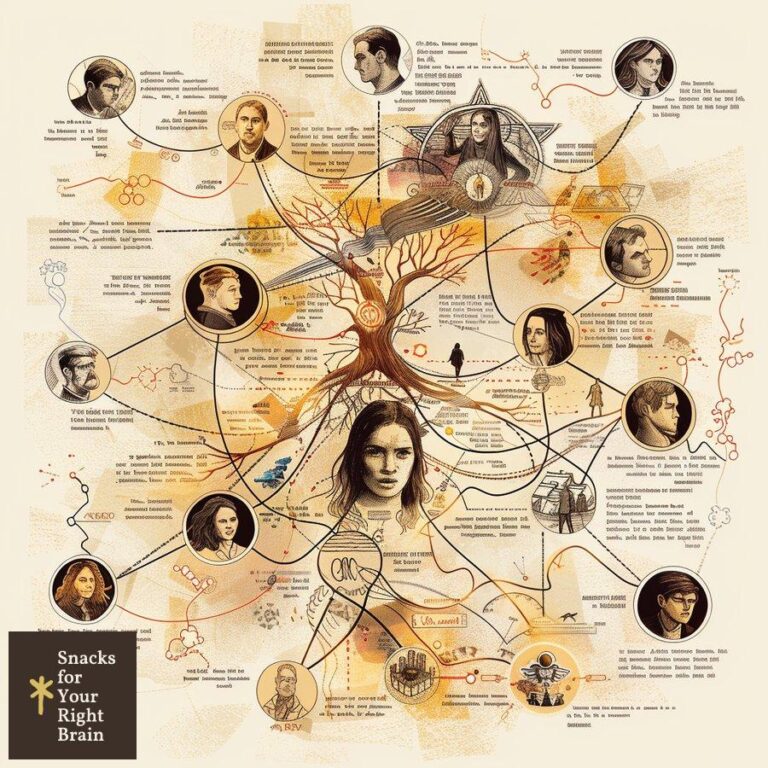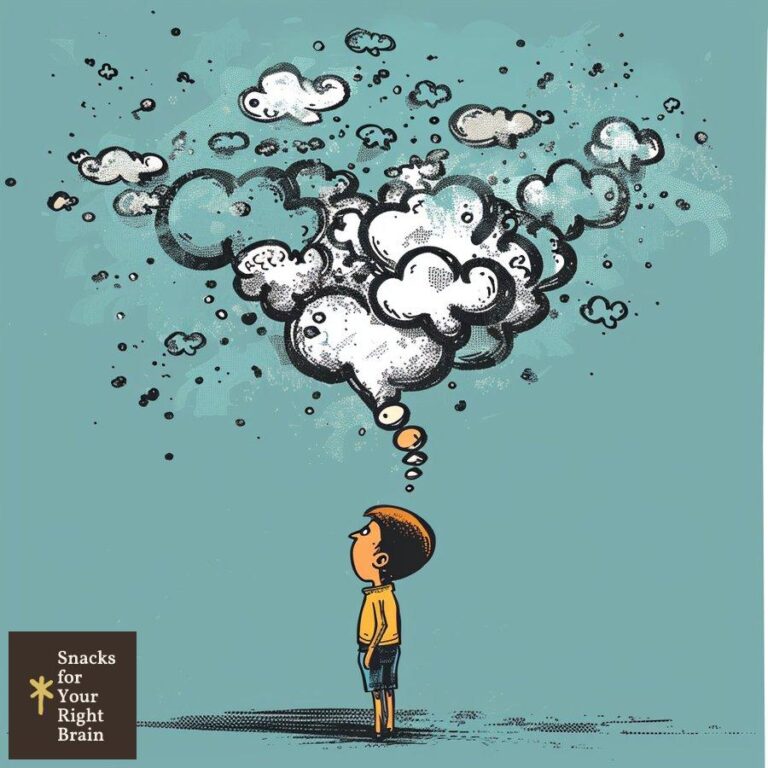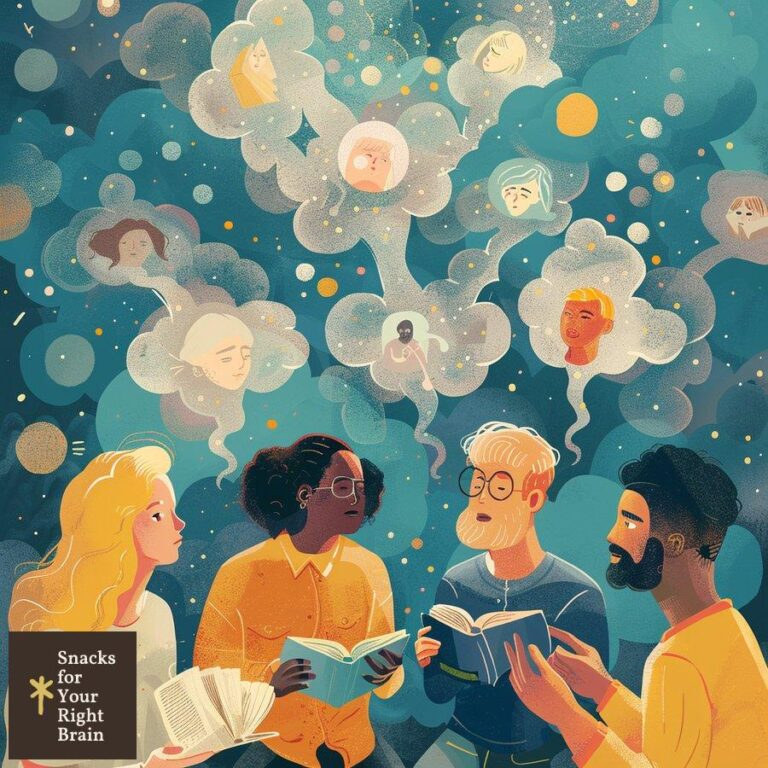What Is the Meaning of Humorous Fiction
What defines humorous fiction?
Humorous fiction is a literary genre that primarily aims to amuse and entertain its readers. It employs various techniques and styles to elicit laughter, often through exaggerated characters, absurd situations, and witty dialogue. The essence of humorous fiction lies in its ability to reflect human experiences and societal norms through a comedic lens, allowing readers to engage with serious themes in a light-hearted manner.
Core elements of humorous fiction include:
-
Exaggeration: Characters and situations are often exaggerated to an absurd degree, creating a comedic effect. This can manifest in physical comedy, hyperbolic character traits, or ludicrous scenarios that challenge realism.
-
Wit and Wordplay: Clever language and puns are frequently used to create humor. The interplay of words can lead to unexpected twists that surprise the reader and provoke laughter.
-
Relatable Situations: Humor often arises from everyday experiences that readers can relate to, making the narrative more engaging. This relatability helps bridge the gap between the absurd and the familiar.
The combination of these elements allows humorous fiction to explore complex themes such as love, friendship, and societal norms while maintaining an entertaining narrative.
How has humorous fiction evolved throughout history?
The evolution of humorous fiction can be traced back to ancient literature, where comedic elements were often intertwined with serious narratives. Over time, the genre has adapted to reflect changing societal norms and cultural contexts.
Historical milestones in humorous fiction include:
-
Ancient Greece and Rome: Early comedic works, such as Aristophanes’ plays, showcased humor through satire and parody, often targeting political figures and societal issues.
-
Middle Ages: The use of humor in literature became more pronounced with the rise of fabliaux, short comic tales that highlighted the follies of common people, often with a moral lesson.
-
Renaissance: The emergence of the novel allowed for deeper character development and situational comedy, as seen in works by authors like Cervantes and Rabelais.
-
18th and 19th Centuries: The rise of the British novel brought forth authors like Jane Austen and Charles Dickens, who incorporated humor to critique social norms and class distinctions.
-
20th Century to Present: The advent of modernism and postmodernism introduced absurdist humor and metafiction, with authors like Kurt Vonnegut and Douglas Adams pushing the boundaries of comedic storytelling.
As society evolves, so does humorous fiction, reflecting contemporary issues and the complexities of human nature.
Who are the most influential authors in humorous fiction?
Several authors have significantly shaped the landscape of humorous fiction, each bringing their unique style and perspective to the genre.
Influential authors include:
-
Mark Twain: Known for his sharp wit and social commentary, Twain’s works, such as The Adventures of Huckleberry Finn, blend humor with profound insights into human nature and society.
-
P.G. Wodehouse: Renowned for his light-hearted narratives and memorable characters, Wodehouse’s Jeeves and Wooster series exemplifies British humor through its clever wordplay and situational comedy.
-
Kurt Vonnegut: A master of absurdist humor, Vonnegut’s novels, including Slaughterhouse-Five, use satire to critique war and societal norms, blending humor with poignant observations.
-
David Sedaris: As a contemporary humorist, Sedaris’s essays often draw on personal experiences, using wit to explore themes of family, identity, and culture.
These authors have not only entertained readers but also challenged societal norms and offered critical reflections on the human condition through humor.
What literary techniques are used to create humor in fiction?
Creating humor in fiction involves a variety of literary techniques that engage readers and elicit laughter. Understanding these techniques enhances the appreciation of humorous narratives.
Common literary techniques include:

-
Irony: This technique involves a contrast between expectation and reality, often leading to humorous situations. For example, a character might strive for success only to find themselves in a comically disastrous situation.
-
Hyperbole: Exaggeration is a powerful tool in humorous fiction, amplifying traits or situations to absurd levels. This can create comedic scenarios that highlight the ridiculousness of a situation.
-
Incongruity: Humor often arises from the juxtaposition of contrasting elements. This can be seen in character interactions or unexpected plot twists that defy logic and create surprise.
-
Pacing and Timing: The delivery of jokes or humorous situations relies heavily on pacing. Well-timed punchlines or unexpected revelations can enhance the comedic effect.
These techniques, when skillfully employed, create a rich tapestry of humor that captivates readers and invites them to reflect on the absurdities of life.
How does wordplay contribute to humor in literature?
Wordplay is a fundamental aspect of humorous fiction, serving as a vehicle for wit and cleverness. It involves manipulating language to create puns, double meanings, and playful expressions that provoke laughter.
Key aspects of wordplay in humorous fiction include:
-
Puns: A pun is a play on words that exploits multiple meanings or similar sounds. This technique can create humorous twists in dialogue or narrative, often leading to unexpected revelations.
-
Malapropisms: The misuse of words that sound similar to the intended word can generate humor. Characters who mispronounce or misapply words can create comedic moments that highlight their ignorance or naivety.
-
Alliteration and Assonance: The repetition of consonant or vowel sounds can enhance the rhythm and musicality of language, making humorous passages more engaging and memorable.
-
Clever Dialogue: Witty exchanges between characters can showcase their intelligence and create humorous situations. This technique often relies on timing and delivery to maximize the comedic effect.
Wordplay not only entertains but also enriches the reading experience, inviting readers to engage with language in a playful manner.
What role does situational comedy play in humorous fiction?
Situational comedy is a vital component of humorous fiction, relying on the absurdity of situations to generate laughter. It often involves characters finding themselves in unexpected or ridiculous circumstances that challenge their expectations.
Elements of situational comedy include:
-
Unexpected Outcomes: Situational comedy thrives on the element of surprise. Characters may devise elaborate plans that ultimately backfire, leading to humorous consequences.
-
Contrasting Characters: The interaction between characters with differing personalities or motivations can create comedic tension. For example, a serious character may clash with a carefree one, leading to humorous misunderstandings.
-
Everyday Scenarios: Humor often emerges from ordinary situations that take an unexpected turn. This relatability allows readers to connect with the characters and their predicaments.
-
Physical Comedy: Visual gags and physical mishaps can enhance situational comedy, often relying on exaggerated actions or expressions to elicit laughter.
Situational comedy enriches humorous narratives by providing a framework for characters to navigate absurd circumstances, ultimately leading to entertaining and memorable moments.
How do character quirks generate laughter in stories?

Character quirks are distinctive traits or behaviors that set individuals apart, often serving as a source of humor in fiction. These idiosyncrasies can create relatable and memorable characters that resonate with readers.
Types of character quirks that generate laughter include:
-
Exaggerated Traits: Characters with exaggerated personality traits, such as extreme optimism or pessimism, can create humorous situations. Their reactions to events may lead to absurd outcomes.
-
Odd Habits: Unique habits or routines can make characters endearing and amusing. For instance, a character who obsessively organizes their belongings may find themselves in comical predicaments.
-
Miscommunication: Characters who misunderstand each other or fail to convey their intentions can lead to humorous misunderstandings. This technique often relies on irony and situational comedy.
-
Contradictory Behaviors: Characters who exhibit contradictory traits can create comedic tension. For example, a character who is both highly intelligent and socially awkward may find themselves in humorous situations.
Character quirks not only generate laughter but also deepen the reader’s connection to the narrative, making the characters more relatable and engaging.
What are the main subgenres of humorous fiction?
Humorous fiction encompasses various subgenres, each offering unique styles and approaches to comedy. Understanding these subgenres allows readers to explore the diverse landscape of humorous literature.
Prominent subgenres include:
-
Satire: This subgenre uses humor to critique societal norms, politics, and cultural issues. Satirical works often employ exaggeration and irony to highlight absurdities in human behavior.
-
Romantic Comedy: Combining elements of romance and humor, this subgenre focuses on the comedic aspects of love and relationships. Misunderstandings and quirky characters often drive the plot.
-
Absurdist Fiction: This subgenre embraces the irrational and nonsensical aspects of life, often leading to surreal and humorous situations. Authors like Samuel Beckett and Franz Kafka exemplify this style.
-
Parody: Parody involves imitating the style of a particular genre or work to create humor. This technique often highlights the absurdities of the original material while entertaining readers.
Each subgenre offers a distinct flavor of humor, allowing readers to find narratives that resonate with their preferences and sensibilities.
How does satirical fiction use humor to critique society?
Satirical fiction employs humor as a powerful tool for social critique, addressing issues such as politics, culture, and human behavior. By exaggerating flaws and absurdities, satire encourages readers to reflect on societal norms and injustices.
Key features of satirical fiction include:
-
Exaggeration: Satirical works often amplify real-life issues to absurd levels, making them more visible and prompting critical reflection. This technique highlights the ridiculousness of certain behaviors and beliefs.
-
Irony: The use of irony in satire allows authors to convey a message while maintaining a humorous tone. This contrast between expectation and reality encourages readers to question established norms.
-
Characterization: Satirical fiction often features exaggerated characters that embody societal flaws. These characters serve as caricatures, making it easier for readers to recognize and critique the issues being addressed.
-
Clever Dialogue: Witty exchanges and sharp commentary are hallmarks of satirical fiction. This clever use of language engages readers while delivering pointed critiques.
Through humor, satirical fiction invites readers to confront uncomfortable truths and consider the implications of societal behaviors, fostering a deeper understanding of the world around them.
What characterizes absurdist fiction?
Absurdist fiction is a subgenre that embraces the irrational and nonsensical aspects of life, often leading to humor that challenges conventional storytelling. It reflects the absurdity of the human condition and the futility of existence.
Characteristics of absurdist fiction include:
-
Illogical Plotlines: Absurdist narratives often defy traditional plot structures, featuring seemingly random events and disconnected storylines that challenge readers’ expectations.
-
Existential Themes: This subgenre frequently explores themes of meaninglessness, isolation, and the absurdity of human existence. Characters may grapple with existential questions in humorous yet poignant ways.
-
Surreal Elements: Absurdist fiction often incorporates surreal imagery and scenarios that blur the line between reality and fantasy. This surrealism enhances the comedic effect by creating unexpected juxtapositions.
-
Dark Humor: Humor in absurdist fiction can be dark and unsettling, reflecting the complexities of life and the human experience. This blend of humor and existential themes invites readers to contemplate deeper meanings.
Absurdist fiction challenges readers to embrace the absurdities of life, offering a unique perspective on the human condition through humor and surrealism.
Why is humorous fiction culturally significant?
Humorous fiction holds cultural significance as it reflects societal norms, challenges conventions, and fosters connections among readers. Its ability to address serious themes through humor makes it a valuable literary form.
Cultural significance of humorous fiction includes:
-
Social Commentary: Humor allows authors to critique societal norms and behaviors in a more accessible manner. Through satire and comedy, readers can engage with complex issues without feeling overwhelmed.
-
Cultural Reflection: Humorous fiction often mirrors the cultural context in which it is created, providing insights into societal values, beliefs, and challenges. This reflection fosters understanding and empathy among readers.
-
Connection and Community: Humor has the power to bring people together, creating shared experiences and fostering connections among readers. Engaging with humorous narratives can lead to discussions about common experiences and perspectives.
-
Emotional Resilience: Humorous fiction can provide comfort and relief during challenging times. Laughter serves as a coping mechanism, allowing readers to navigate difficult emotions and situations.
Through its cultural significance, humorous fiction enriches the literary landscape, offering insights into the human experience while entertaining and engaging readers.
What psychological benefits does reading humorous fiction offer?

Reading humorous fiction provides various psychological benefits, contributing to emotional well-being and cognitive development. Engaging with humor can enhance the reading experience and promote positive mental health.
Psychological benefits of reading humorous fiction include:
-
Stress Relief: Laughter has been shown to reduce stress and promote relaxation. Engaging with humorous narratives can provide an escape from daily pressures and challenges.
-
Enhanced Creativity: Exposure to humor can stimulate creative thinking and problem-solving skills. The playful nature of humorous fiction encourages readers to think outside the box.
-
Improved Mood: Humorous fiction can elevate mood and foster positive emotions. Engaging with comedic narratives can lead to feelings of joy and contentment.
-
Social Connection: Sharing humorous stories can strengthen social bonds and foster connections among individuals. Humor serves as a bridge, allowing people to relate to one another.
Reading humorous fiction not only entertains but also contributes to overall psychological well-being, making it a valuable addition to one’s literary diet.
How do authors balance humor and plot in their writing?
Balancing humor and plot is a critical skill for authors of humorous fiction. Effective integration of comedic elements within a cohesive narrative ensures that the story remains engaging while eliciting laughter.
Strategies for balancing humor and plot include:
-
Character-Driven Humor: Developing well-rounded characters allows humor to arise naturally from their interactions and situations. This approach ensures that comedic moments feel authentic and contribute to character development.
-
Pacing and Timing: The timing of humorous elements is crucial. Authors must consider how to weave comedic moments into the narrative without disrupting the flow of the plot. Well-timed punchlines or humorous revelations can enhance the overall experience.
-
Plot Relevance: Humor should serve the plot rather than overshadow it. Authors can incorporate comedic elements that align with the story’s themes and character arcs, ensuring that humor enhances rather than detracts from the narrative.
-
Variety of Humor: Employing a range of humorous techniques, such as wordplay, situational comedy, and character quirks, can keep the narrative fresh and engaging. This variety allows authors to explore different comedic avenues while maintaining plot coherence.
By skillfully balancing humor and plot, authors create narratives that resonate with readers, offering both entertainment and meaningful storytelling.
What makes humor in fiction subjective?
Humor is inherently subjective, influenced by individual experiences, cultural backgrounds, and personal preferences. This subjectivity shapes how readers perceive and respond to comedic elements in fiction.
Factors contributing to the subjectivity of humor in fiction include:
-
Cultural Context: Humor often relies on cultural references and norms. What is considered funny in one culture may not resonate in another, leading to varying interpretations of comedic elements.
-
Personal Experiences: Individual experiences shape one’s sense of humor. Readers may find humor in situations that reflect their own lives, while others may not relate to the same scenarios.
-
Expectations and Taste: Different readers have varying expectations and tastes when it comes to humor. Some may prefer witty wordplay, while others enjoy slapstick or absurdist humor, leading to diverse reactions to the same narrative.
-
Emotional State: A reader’s emotional state can influence their perception of humor. Factors such as mood, stress levels, and personal circumstances can affect how one responds to comedic elements.
The subjectivity of humor invites readers to engage with narratives in unique ways, fostering diverse interpretations and discussions around comedic literature.
How has the digital age influenced humorous fiction?
The digital age has transformed the landscape of humorous fiction, introducing new platforms, styles, and forms of expression. This evolution has reshaped how humor is created, shared, and consumed.
Influences of the digital age on humorous fiction include:
-
Accessibility: The internet has made humorous content more accessible than ever. Readers can easily discover and share humorous stories, essays, and memes, leading to a democratization of comedic expression.
-
Social Media: Platforms like Twitter, Instagram, and TikTok have given rise to new forms of humor, such as micro-fiction and visual comedy. Authors can engage with audiences in real-time, fostering a sense of community around shared humor.
-
Multimedia Integration: The digital age allows for the integration of various media, such as images, videos, and audio, enhancing the comedic experience. This multimedia approach can create richer narratives and engage readers on multiple levels.
-
Emergence of New Voices: The digital landscape has provided a platform for diverse voices in humorous fiction. Emerging authors can share their work without traditional publishing barriers, leading to a wider range of comedic perspectives.
The digital age has redefined the creation and consumption of humorous fiction, fostering innovation and diversity while expanding the reach of comedic narratives.
In what ways is humor being integrated into other literary genres?

Humor is increasingly being integrated into various literary genres, enriching narratives and providing a fresh perspective on traditional themes. This blending of genres allows authors to explore complex topics through a comedic lens.
Examples of humor integration in other genres include:
-
Mystery and Thriller: Authors often incorporate humor into suspenseful narratives, providing comic relief amid tension. This balance can enhance the reading experience by offering moments of levity.
-
Science Fiction and Fantasy: Humor in speculative fiction can serve to critique societal norms or explore absurdities within fantastical worlds. Authors like Douglas Adams and Terry Pratchett exemplify this integration.
-
Historical Fiction: Humor can be used to humanize historical figures and events, making them more relatable to contemporary readers. This approach allows authors to explore serious themes while maintaining an engaging narrative.
-
Literary Fiction: Many literary authors incorporate humor to add depth to character development and thematic exploration. This blending enriches the reading experience, inviting readers to engage with complex ideas in a more accessible manner.
The integration of humor into various genres enhances storytelling, allowing authors to address serious themes while keeping readers entertained.
How can readers analyze and appreciate humor in literature?
Analyzing and appreciating humor in literature involves a deeper understanding of the techniques and elements that contribute to comedic narratives. Readers can enhance their engagement with humorous fiction through thoughtful analysis.
Strategies for analyzing humor in literature include:
-
Identifying Techniques: Recognizing the literary techniques employed, such as irony, wordplay, and exaggeration, can deepen appreciation for the craft of humor. Understanding how these techniques work together enhances the reading experience.
-
Contextual Understanding: Considering the cultural and historical context of a work can provide insights into its humor. Understanding the societal norms and issues addressed can enrich the reader’s interpretation.
-
Character Analysis: Examining character traits and quirks can reveal how humor arises from their interactions and situations. Analyzing character dynamics can uncover layers of meaning within the narrative.
-
Personal Reflection: Reflecting on personal experiences and preferences can enhance the appreciation of humor. Readers can consider how their backgrounds influence their responsesof humor. Readers can consider how their backgrounds influence their responses to comedic elements, leading to a more personalized understanding of the narrative.
Which humorous fiction works are essential reading for newcomers to the genre?
For those new to humorous fiction, certain works stand out as essential reading, offering a diverse array of styles and comedic approaches. These texts not only entertain but also provide insight into the genre’s breadth and depth.
Essential works of humorous fiction include:
-
The Hitchhiker’s Guide to the Galaxy by Douglas Adams: This science fiction comedy is a quintessential example of absurdist humor, blending wit, satire, and a whimsical narrative that explores the universe’s absurdities.
-
The Importance of Being Earnest by Oscar Wilde: A classic play that showcases Wilde’s sharp wit and social commentary, this work is a masterclass in irony and wordplay, highlighting the absurdities of Victorian society.
-
Catch-22 by Joseph Heller: This novel combines dark humor with a critique of bureaucracy and war, using absurd situations to explore the complexities of the human experience.
-
Good Omens by Neil Gaiman and Terry Pratchett: A comedic take on the apocalypse, this novel blends fantasy and humor, featuring quirky characters and witty dialogue that entertain while addressing profound themes.
-
Bossypants by Tina Fey: A memoir that showcases Fey’s unique comedic voice, this work offers insights into her life and career while employing humor to tackle issues of gender and identity.
These works serve as a gateway into the world of humorous fiction, providing readers with a range of styles and themes that exemplify the genre’s richness.
Conclusion
Humorous fiction is a vibrant and dynamic genre that reflects the complexities of human experience through comedy. By employing a variety of techniques, from wordplay and situational comedy to character quirks and satire, authors create narratives that entertain while prompting reflection on societal norms and personal experiences. The evolution of humorous fiction throughout history, the influence of notable authors, and the integration of humor into various genres highlight its cultural significance and psychological benefits.
As readers engage with humorous fiction, they not only find joy and laughter but also gain insights into the human condition. The subjectivity of humor invites diverse interpretations, enriching the reading experience and fostering connections among individuals. In the digital age, the accessibility and innovation within humorous fiction continue to expand its reach, allowing new voices to emerge and engage with audiences worldwide.
For newcomers to the genre, exploring essential works of humorous fiction provides a foundation for understanding its breadth and depth. Through laughter and wit, humorous fiction remains a powerful form of storytelling that resonates with readers, offering both entertainment and meaningful reflections on life.






